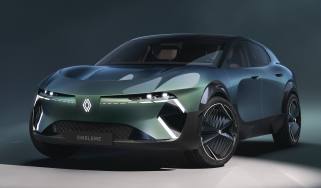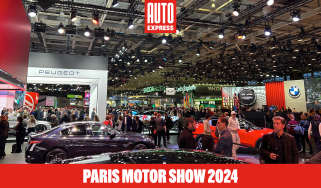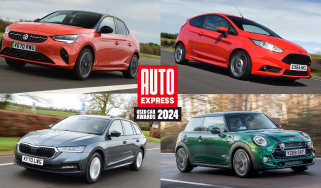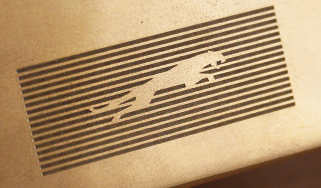Renault’s future tech revealed
Efficiency improvements and weight reduction, as well as new, in-car tech and autonomous driving capability for future Renaults
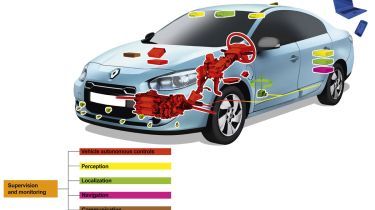
Renault has previewed the next-generation technology that will underpin its future road cars, detailing strong advances in efficiency, lightweight body parts and advanced in-car technology – as well as showcasing its prototype computer-controlled autonomous driving vehicles.
The French manufacturer is focusing heavily on reducing CO2 emissions and increasing fuel economy on its next wave of models, drawing on advanced turbocharging and Formula One-inspired technology.
Renault has developed a new twin-turbocharging system for its four-cylinder diesel engines, giving anywhere between a 2-8% improvement in efficiency depending on the application. The system uses a small turbo to improve low-end response and torque – working almost from idle – with a larger turbocharger taking over from just below 2,000rpm to give strong power at higher revs.
Renault has also focused on reducing vehicle weight, claiming a weight saving of 10kg results in a 1g/km reduction in CO2. Showcasing an advanced tailgate design at its innovations workshop – mating the rear glass screen directly to the boot lid’s frame for the first time – the development saves 2.5kg.
Renault vice president engineering and quality Jean-Michel Billig confirmed to Auto Express that the firm was investigating composite materials like carbon fibre for further weight saving, but that, currently, the end cost for the customer is too great.
Also on show was Renault’s new ‘tilted’ 0.9-litre three-cylinder turbocharged TCe engine. By angling the engine block at 49-degrees to the vertical, this has allowed the firm to improve packaging, “opening up opportunities for new vehicle architectures,” according to Billig.
It’s highly likely that this new, angled engine will be mounted in the rear of the Renault’s next-generation Twingo city car set to debut at the 2014 Geneva Motor Show, improving cabin and luggage space as a result.
Alongside Renault’s mechanical innovations, the Paris-based brand has been working on advanced chassis and in-car technologies to “improve well-being on board.”
Renault’s engineers have further developed its ‘4Control’ four-wheel steering system from the Laguna saloon – this turns the rear wheels in the opposite direction to the fronts below 60kph to improve agility, doing the opposite above 60kph to help stability.
This is coupled with a new variable electronic damper control system featuring two modes: Comfort and Sport. Renault says the technology “places the emphasis on passenger comfort or road holding should the driver prefer a sportier driving style, while still optimising ride comfort.”
The system can also be manipulated to reduce roll in the corners and pitching under accelerating and braking. Although not currently under development on hot Renaults, chassis control system architect Mouton Xavier highlighted that both systems could by employed on Renaultsport products of the future to further performance.
The French manufacturer has also turned its focus to in-car technology by improving the vehicle interface. Its next-generation cars will receive a new head-up display, linked to a high-resolution “capacitive discharge” touchscreen, incorporating swipe-motion recognition like a smartphone or tablet. This is aimed at reducing the time motorists have to look away from the road to less than two seconds.
Further down the line, this will be linked to advanced driver assistance systems incorporating computer-controlled autonomous driving functions in specially delegated areas.
Similar to Mercedes’ efforts with the new S-Class, Renault has already developed a prototype Zoe electric car that can assume control of the vehicle at speeds of up to 30kph when in traffic. Renault is predicting its self-driving cars will be available to the public by 2020, pending approval by the relevant legislative bodies.


